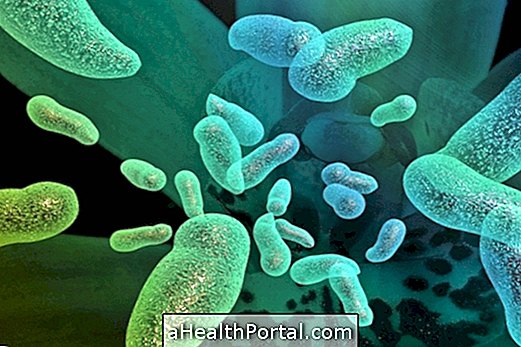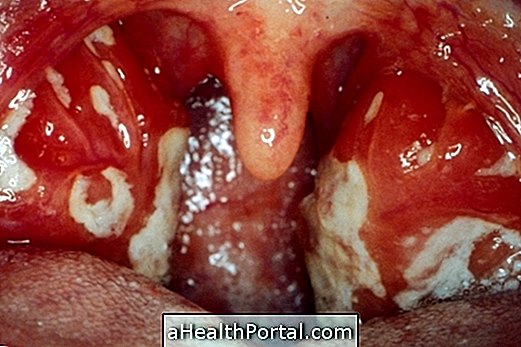Whipple's disease is a rare infectious disease caused by bacteria Tropheryma whipplei, which in most cases affects the small intestine and hinders the absorption of food, causing symptoms such as diarrhea, abdominal pain or weight loss.
Although gastrointestinal symptoms are more frequent, it is also common for more general symptoms to arise due to the installation of the bacteria in other organs, with joint pain, movement changes and cognitive disorders due to brain impairment, and chest pain, lack of air and palpitations, due to the involvement of the heart, for example.
Although it can be life-threatening as it progresses, Whipple's disease can be treated with the use of antibiotics prescribed by the gastroenterologist or general practitioner, and it is important to treat it according to medical advice to ensure the elimination of the bacteria from the body. .

Symptoms of Whipple's disease
The most common symptoms of Whipple's disease are related to the fact that the bacteria settles in the intestine and causes small lesions that hinder the absorption of minerals, nutrients, fat and water. The main symptoms of Whipple's disease are:
- Constant diarrhea;
- Abdominal pain;
- Cramps that can get worse after meals;
- Presence of fat in the stool;
- Weight loss.
Symptoms usually worsen very slowly over time, and may last for months or years. As the disease progresses, it can affect other parts of the body and cause other symptoms such as joint pain, cough, fever and enlarged lymph nodes.
The most serious form, however, happens when neurological symptoms appear, such as cognitive changes, eye movements, changes in movement and behavior, seizures and speech difficulties, or when cardiac symptoms appear, such as chest pain, shortness of breath and palpitations, due to changes in cardiac function.
Although the doctor may suspect the disease due to the symptoms and clinical history, the diagnosis can only be confirmed with a biopsy of the intestine, usually removed during a colonoscopy or upper digestive endoscopy, as it is thus possible to check for impairment.
How the treatment is done
The treatment of Whipple's disease is usually initiated with an injectable antibiotic, such as Ceftriaxone or Penicillin, for 15 days, then it is necessary to maintain oral antibiotics, such as Sulfametoxazol-Trimetoprima, Chloramphenicol or Doxycycline, for example, during 1 or 2 years, to completely eliminate bacteria from the body.
Although the treatment takes a long time, most symptoms disappear between 1 and 2 weeks after the beginning of the treatment, however, the use of the antibiotic must be maintained for the entire period indicated by the doctor.
In addition to antibiotics, the intake of probiotics is essential to regulate the functioning of the intestine and improve the absorption of nutrients. It may also be necessary to supplement vitamins and minerals, such as vitamin D, A, K and B vitamins, as well as calcium, for example, because the bacterium hinders the absorption of food and can cause cases of malnutrition.
How to prevent
To prevent this infection it is important to just drink drinking water and wash food well before preparing it, as the bacteria that causes the disease are usually found in soil and contaminated water.
However, there are many people who have the bacteria in the body, but never develop the disease.
Was this information helpful?
Yes No
Your opinion is important! Write here how we can improve our text:
Any questions? Click here to be answered.
Email in which you want to receive a reply:
Check the confirmation email we sent you.
Your name:
Reason for visit:
--- Choose your reason --- DiseaseLive betterHelp another personGain knowledge
Are you a health professional?
NoMedicalPharmaceuticalsNurseNutritionistBiomedicalPhysiotherapistBeauticianOther
Bibliography
- OLIVEIRA, LUÍS; GORJÃO, RICARDO; GOD, JOHN R. Whipple's disease. 2010. Available at:. Accessed on 15 Feb 2021
- ROCHA, Henrique C .; MARTINS, Wóquiton R .; CARVALHO, Marcos Roberto; AMARAL, Lígia M. Clinical manifestations and diagnosis of Whipple's disease: case report. Rev Med Minas Gerais. Vol 25. 2nd ed; 296-300, 2015
- SILVA, Guilherme A. R .; NETO, José S. P. Whipple's disease manifested as difficult to diagnose polyarthralgia: case report and literature review. Brazilian Journal of Rheumatology. Vol 57. 5 ed; 483-486, 2017
























